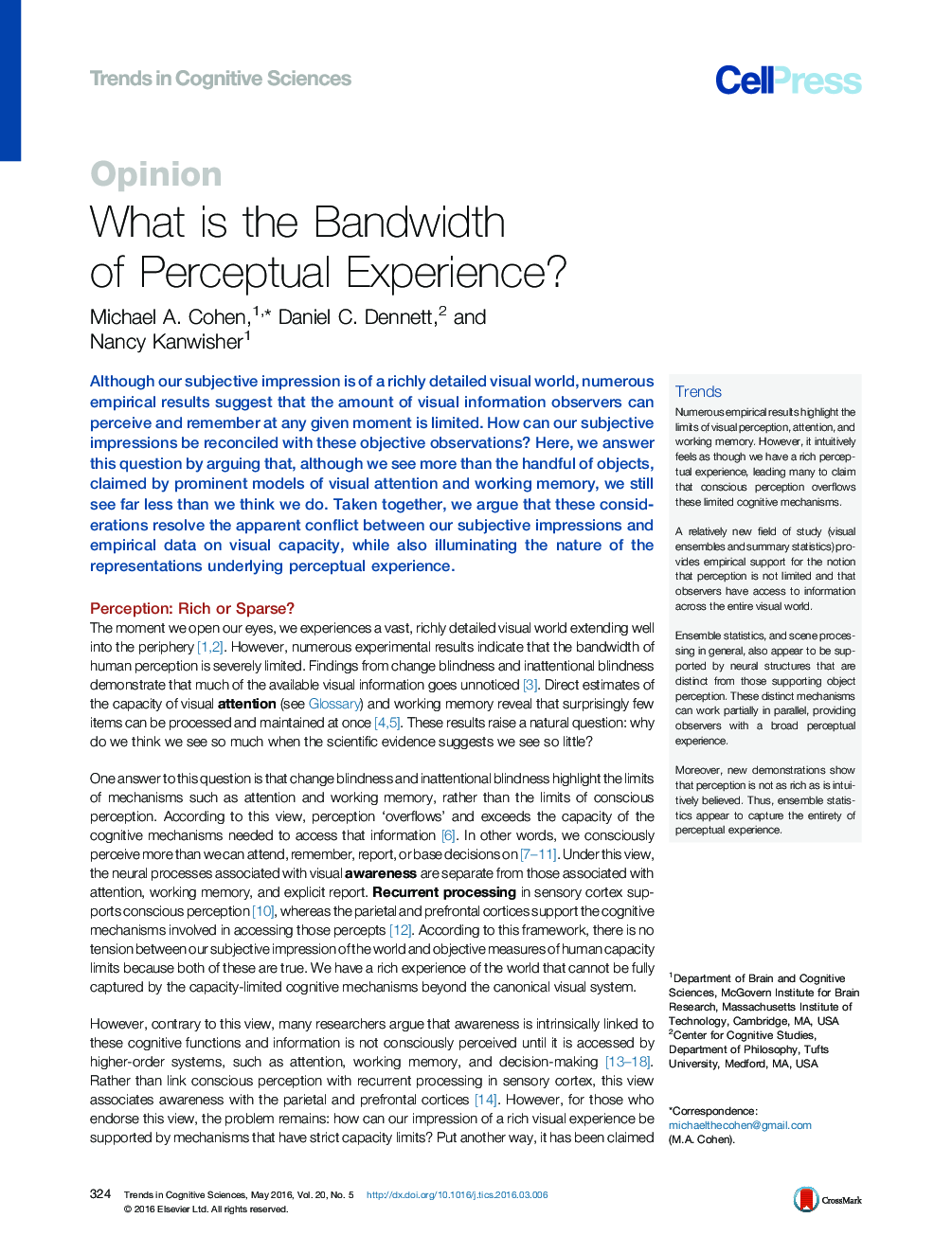| Article ID | Journal | Published Year | Pages | File Type |
|---|---|---|---|---|
| 141341 | Trends in Cognitive Sciences | 2016 | 12 Pages |
Although our subjective impression is of a richly detailed visual world, numerous empirical results suggest that the amount of visual information observers can perceive and remember at any given moment is limited. How can our subjective impressions be reconciled with these objective observations? Here, we answer this question by arguing that, although we see more than the handful of objects, claimed by prominent models of visual attention and working memory, we still see far less than we think we do. Taken together, we argue that these considerations resolve the apparent conflict between our subjective impressions and empirical data on visual capacity, while also illuminating the nature of the representations underlying perceptual experience.
TrendsNumerous empirical results highlight the limits of visual perception, attention, and working memory. However, it intuitively feels as though we have a rich perceptual experience, leading many to claim that conscious perception overflows these limited cognitive mechanisms.A relatively new field of study (visual ensembles and summary statistics) provides empirical support for the notion that perception is not limited and that observers have access to information across the entire visual world.Ensemble statistics, and scene processing in general, also appear to be supported by neural structures that are distinct from those supporting object perception. These distinct mechanisms can work partially in parallel, providing observers with a broad perceptual experience.Moreover, new demonstrations show that perception is not as rich as is intuitively believed. Thus, ensemble statistics appear to capture the entirety of perceptual experience.
